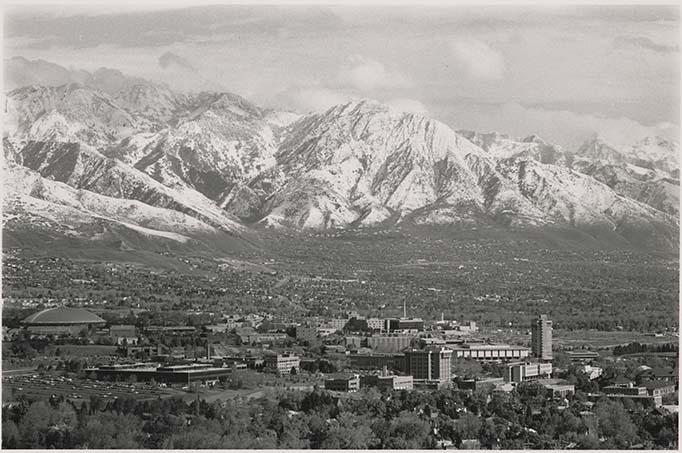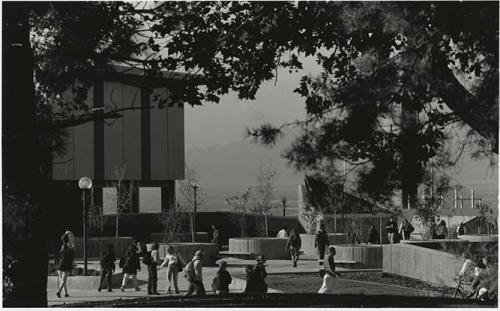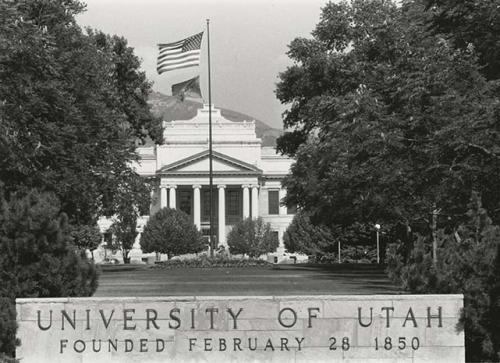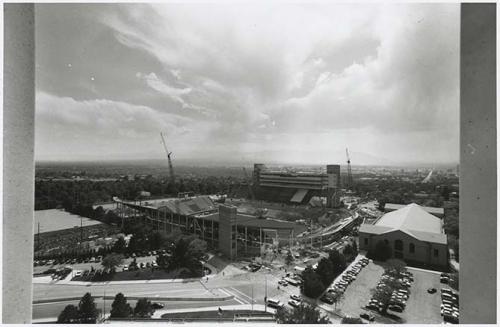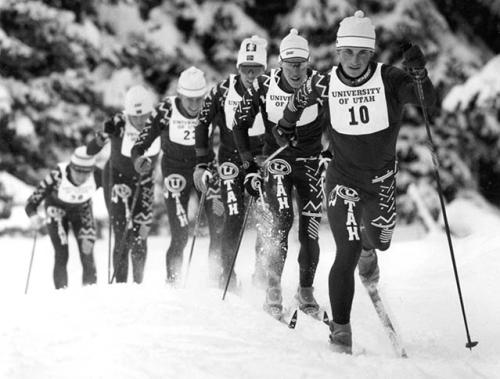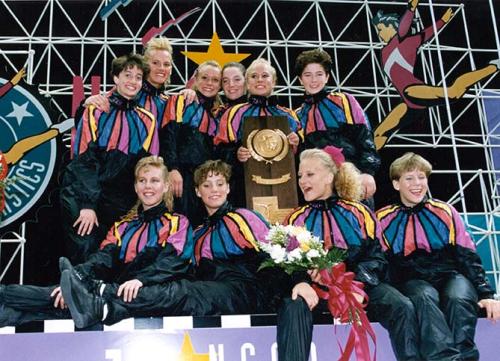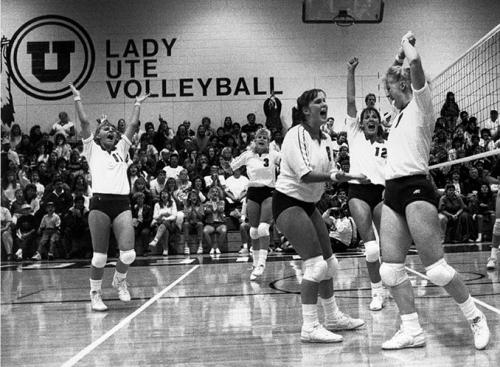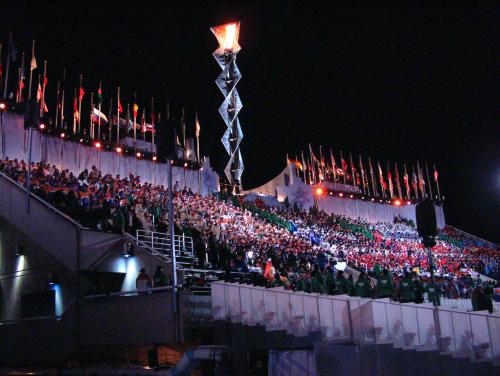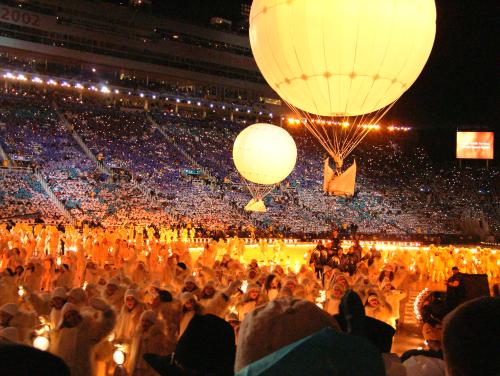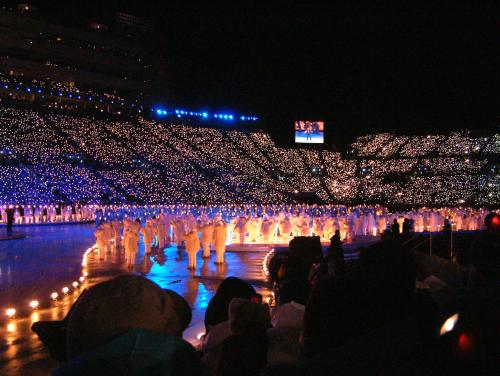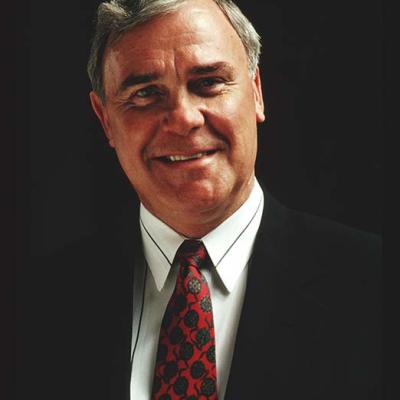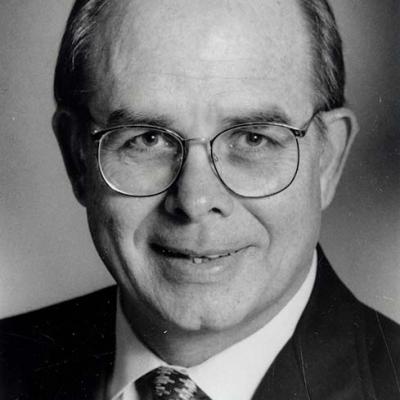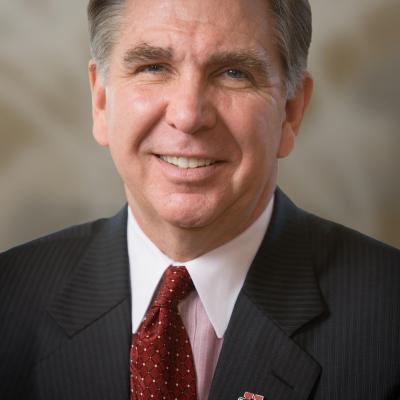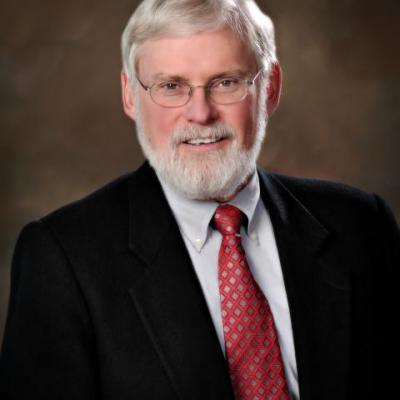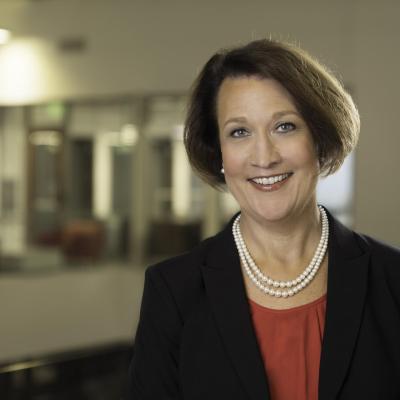From the Millennium Forwards, 1991-2004
In 1991, Chase Peterson departed as president of the University in 1991 and Arthur K. Smith took the helm as the first president who was not a member of the Church of Jesus Christ of Latter-Day Saints. President Smith inherited an institution that had gained national standing not only for the depth of its research programs, but for its commitment to providing a quality education in all fields.
As in previous decades, the 1990s saw a boom in construction across campus. The Huntsman Cancer Institute first opened in 1999, funded by the largest gift the university had received at the time. New sports facilities were built across campus, including:the Dumke Gymnastics Center; the George S. Eccles Tennis Facility; the Dee Glen Smith Athletics Center; and the Rice-Eccles Stadium renovation, which increased seating to 45,634-seats. New buildings were constructed for the growing language, dance, and biology programs. Existing buildings—such as Kingsbury Hall, Gardner Hall, and the athletics auxiliary training room—were completely renovated, and a 200,000 square foot addition to the J. Willard Marriott Library was finished in 1996. In 2001, the Utah Museum of Fine Arts opened a 70,000-square-foot building on campus. In 1997, President Smith left the University of Utah, and was replaced by Jerilyn McIntyre as interim president. She was replaced at the end of the year by Bernard Machen.
The 1990s also saw the university continue to attain national standing in sports. The 1994 football season–the best in school history–saw Utah finish the season with a school-record 10 wins (10-2) and a number 10 Associated Press ranking. The Utes also ranked nationally in volleyball and skiing. The men's basketball team, under coach Rick Majerus, advanced to the NCAA’s "Sweet Sixteen" several times during the decade. The continuing success of the Ski Team helped inspire the creation, in 1989, of the Ski & Snow Sports Archive in the Marriott Library Special Collections to preserve the history of snow sports at the University of Utah and throughout the region.
In the 1990s, women’s sports at the University of Utah continued to flourish. In 1983, Elaine Elliott had become head coach of the Women’s Basketball team; until her retirement in 2011, Elliott led the Utes to 15 appearances in the NCAA Women’s Division I Basketball Championship. Under the 40-year leadership of the Marsdens, the University of Utah gymnastics team continued its unprecedented dominance as the only American team to qualify for every single national championship. During the 1990s, the Utes placed on the podium in 8 national championships, 4 of which they won. From 1979 to 2002, Utah gymnastics set the longest regular season home win streak of 170 meets.
The University faced one of its biggest challenges in the new millennium as it prepared alongside Salt Lake City to host the Winter Olympics in 2002. The International Olympic Committee selected the University of Utah as the site for the Olympic Village in 1995, and Rice Stadium was chosen as the location of the Opening and Closing Ceremonies. In preparation for the ceremonies, the stadium received an additional expansion, bringing its seating up to 46,500 with an additional 3,500 provided by bleacher seating on the field.
One of the largest changes that the Olympics brought to Salt Lake City and to campus was infrastructural: campus roads were upgraded, and the TRAX public transportation system was built. The TRAX University Line opened on December 15, 2001, providing service from the Delta Center to Rice-Eccles Stadium. Fort Douglas gave up more of its land for the construction of the Olympic Village, and after the Olympics, the construction was transformed into student housing. The preparation allowed the University of Utah to successfully host up to 4,500 athletes and the over 55,000 people who attended the Opening Ceremonies in person.
Yet the students—the real future of the University of Utah—continue to come to classes; researchers continue to make advances in technology and medicine; the faculty continues to impart their knowledge and experience to willing minds. Despite the many advances in science, technology, and other fields, no one can yet predict the future, so it is impossible to say what the next 150 years holds for the University of Utah. But if the past is prologue, as the philosophers say, then the city of Salt Lake, the state of Utah, and indeed the world can continue to expect great things to come out of the campus on the hill.

